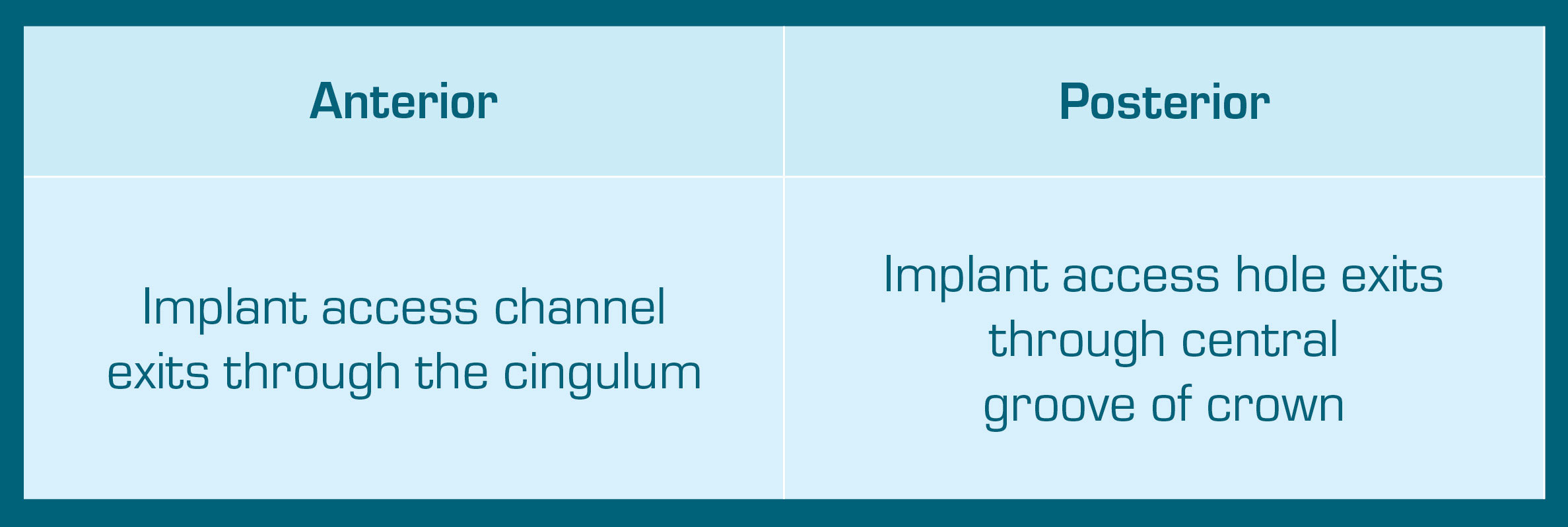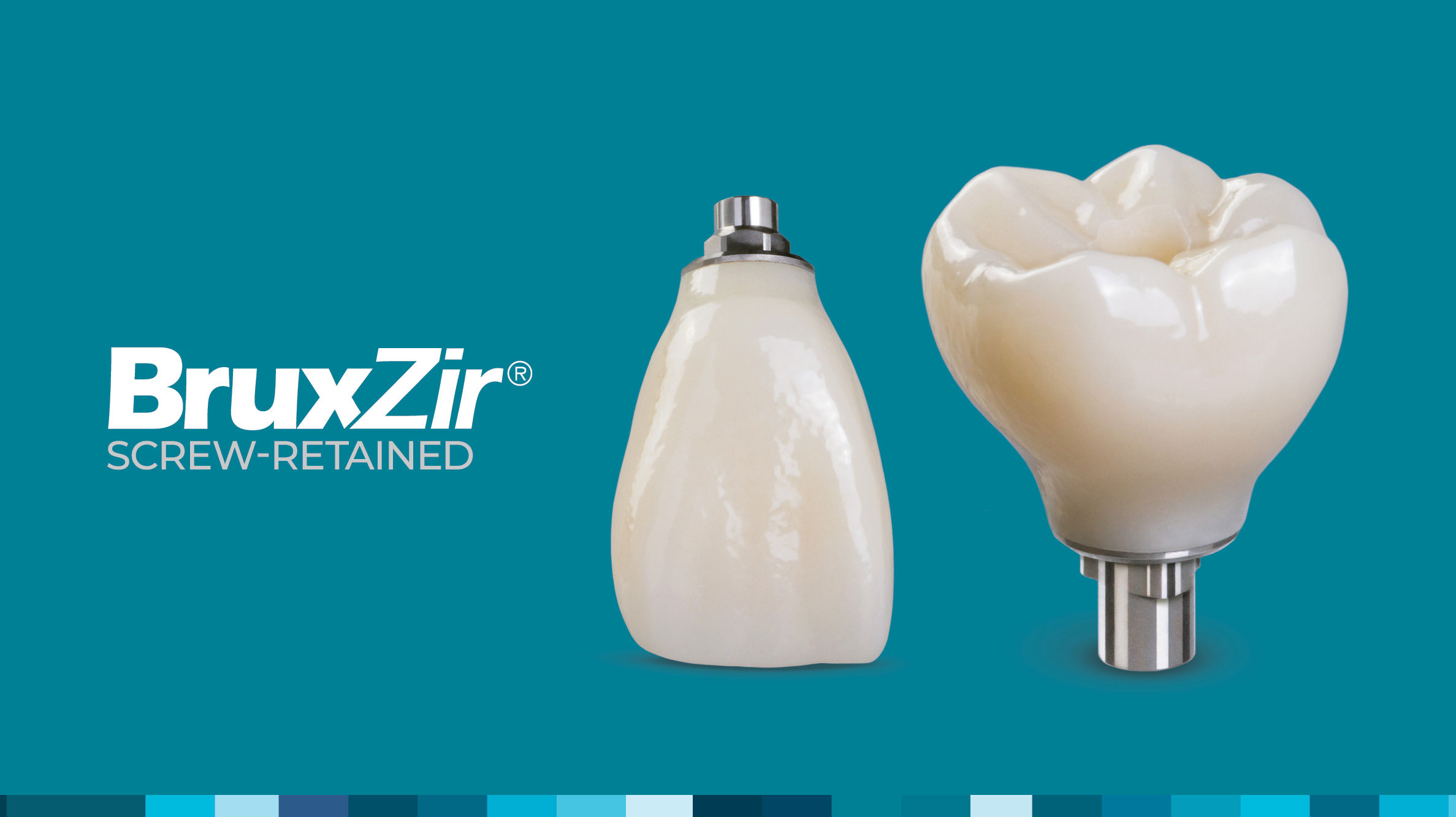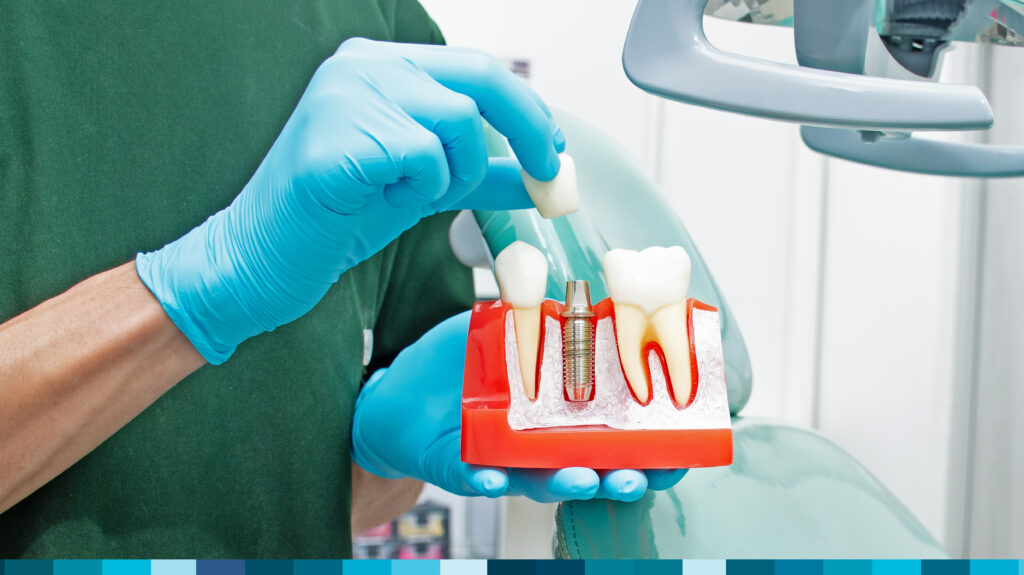Besides deciding between analog and digital dentistry, choosing between a screw- or cement-retained restoration is an important consideration to make when placing and restoring implants. Years ago, doctors preferred applying cement-retained crowns for their ability to create a passive fit that accounts for implant angulation. And while the choice ultimately comes down to each individual case, the most preferred type of restoration we see these days is the screw-retained crown. In this post, we’ll answer four key questions about screw-retained crowns.
When Would You Choose Screw- Over Cement-retained?
In theory, cement-retained implant crowns are most similar to crowns over a natural tooth, which made them a simple choice for patients and doctors. Today, it’s understood that each individual case requires a deeper examination for which type of crown is the more optimal choice. One type of case where screw retention is preferred is if the implant is placed in an ideal position. In the anterior, positioning is ideal when the access channel of the implant restoration exits through the cingulum. In the posterior, screw retention is appropriate when the access hole emerges through the central groove of the crown. Screw-retained restorations are optimal in these conditions because they avoid the risk of residual cement impacting the patient’s hard- or soft-tissue health, and they can be removed with relative ease if needed.

Esthetically, screw-retained crowns have an advantage in that the margin of the titanium base of the restoration is situated well beneath the gingival surface. This minimizes the metal show-through in cases of thin gingival biotype. One possible downside to consider, though, is that the screw access hole may cause esthetic concerns for certain patients. This leads some clinicians to opt for cementable restorations when working with restorations in the mandible. There is also the potential for the access hole to compromise the location of occlusal contacts. That said, proper material selection can help seal the access hole in a way that seamlessly blends with the surrounding tooth.
Do You Need More Space for a Screw-retained Crown?
The decision between screw- and cement-retained crowns may also come down to available restorative space and the angle at which the implant was placed. Screw-retained restorations are advantageous in cases of limited interocclusal space because less restorative space is required.
When measuring the restorative space for any implant restoration, be sure to measure from the implant platform to the opposing arch. Cement-retained restorations require a minimum interarch space of approximately 7-8 mm. For example, about 3 mm is needed for soft tissue height, about 4 mm is dedicated to the abutment for the proper retention form, and an additional 1 mm is needed for the BruxZir® Zirconia material. A screw-retained BruxZir restoration, on the other hand, only requires a minimum of 6 mm of restorative space: 1 mm from the implant platform to the titanium base margin, 4 mm of titanium base height and 1 mm for the BruxZir material. Other materials may require additional occlusal clearance.

What Are the Overall Benefits of Screw-retained Crowns?
While cement-retained crowns present the advantage of flexibility regarding implant positioning, screw-retained restorations have advantages of their own. One clear benefit is that screw-retained crowns offer simple, efficient crown delivery and are easier to retrieve down the road if it is necessary to manage any technical or biological complications. For clinicians concerned with reducing patients’ chair times, screw retention is the clear winner.
The biggest advantage of this type of restoration, though, is the fact that there is no intraoral cementation, and you do not have to worry about the cement cleanup. We suggest BruxZir Full-Strength and BruxZir Esthetic materials for screw-retained restorations, depending on the location of the restoration and the esthetic demand of the situation. Both of these materials offer exceptional strength and are milled with high-precision CAD/CAM technology that ensures an accurate fit and a smooth final delivery appointment.
What If I Still Want the Benefits of Cement?
The last important thing to note regarding screw- versus cement-retained crowns is that there is also a hybrid option available. The screwmentable* method combines the advantages of both the cement-retained and screw-retained implant restorations by providing an open access channel over a custom-milled titanium abutment.
With this option, you are not limited by the angulation or emergence profile of the titanium base used in screw-retained restorations. The use of a custom abutment allows you to correct the angulation and idealize the emergence profile while lending the proper support for the esthetic ceramic on top. New West can lute them together for you or we can send them separately. Additionally, you can cement the abutment and the crown extraorally, eliminating the need for cement in the mouth. These restorations also have the benefit of an access channel, allowing for easy retrieval if needed.
Whether you’re ready to start placing these restorations, or still want to learn more, reach out to us any time.
*To prescribe a screwmentable restoration through New West Dental Lab, select a custom abutment with crown when you fill out your prescription, and request an access hole in the crown in the case notes.





